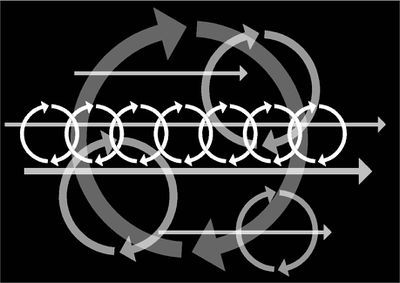atom10:RhythmAnalysis
| Line 1: | Line 1: | ||
<div style="float: left; width: 990px; "> | <div style="float: left; width: 990px; "> | ||
| − | |||
| − | |||
| − | |||
| − | |||
| − | |||
| − | |||
| − | |||
| − | |||
| − | |||
| − | |||
| − | |||
| − | |||
| − | |||
| − | |||
| − | |||
| − | |||
| − | |||
| − | |||
| − | |||
| − | |||
| − | |||
| − | |||
| − | |||
| − | |||
| − | |||
| − | |||
| − | |||
| − | |||
| − | |||
| − | |||
[[atom10: Rhythm | Read more about rhythm]] | [[atom10: Rhythm | Read more about rhythm]] | ||
| Line 75: | Line 45: | ||
[[Image:CvsL.jpg|thumb|left|400px|caption]] | [[Image:CvsL.jpg|thumb|left|400px|caption]] | ||
| + | |||
| + | The surrounding institutions control the rhythm of movement and activity surrounding and extending beyond the site. We need to map and represent the contours of the flow of people around the site. This analysis will help us to define where the intervention can engage with users. | ||
| + | |||
| + | How can we map rhythm? - Using data based on a range of characteristics we can create a contour map of flows for the two main institutions, | ||
| + | |||
| + | *Library | ||
| + | knowledge flow | ||
| + | opening hours | ||
| + | books loaned out | ||
| + | new journals, every day/week | ||
| + | newspapers | ||
| + | |||
| + | *Architecture building | ||
| + | lectures | ||
| + | times/students | ||
| + | cafe/canteen | ||
| + | espresso bar | ||
| + | library | ||
| + | university employees | ||
| + | |||
| + | *Science museum | ||
| + | opening hours | ||
| + | visitors | ||
| + | |||
| + | *Sports centre | ||
| + | opening hours | ||
| + | registered students | ||
| + | |||
| + | *Botanical garden | ||
| + | opening hours | ||
| + | types of plants | ||
| + | seasonal changes | ||
| + | |||
</div> | </div> | ||
<br style="clear: both; height: 0; line-height: 0; font-size: px; /*for IE*/"/> | <br style="clear: both; height: 0; line-height: 0; font-size: px; /*for IE*/"/> | ||
Revision as of 13:23, 2 October 2011
Contents |
Definitions
RHYTHM = time + space + energy
Everywhere where there is interaction between a place, a time and an expenditure of energy, there is rhythm. Therefore: a) repetition (of movements, gestures, action, situations, differences) b) interferences of linear processes and cyclical processes c) birth, growth, peak, then decline and end.
Rhythm is change and repetition, identity and difference, contrast and continuity. Lefebvre uses it as a mode of analysis – a tool.
The notion of rhythm brings with it also the notions of polyrhytmia, eurhythmia and arrhythmia.
Lefebvre defines some categories to analyze rhythm:
- Repetition and difference
- Mechanical and organic
- Discovery and creation
- Cyclical and linear
- Contnuous and discontinuous
- Quantitative and qualitative.
The Rhythmanalytical project
There is a strong relation between everyday life and rhythm - a concrete modalities of social time.
We are particulraly interested in the relation between cyclical and linear time. In this way we can describe daytime in accordance with social categories.
The realtions of the cyclical time and the linear are not simple: there is between them antagonistic unity - they are in perpetual interaction.
Cyclical repetition and the linear repetitive separate out under analysis, but in reality interfere with one another constantly. The cyclical originates in the cosmic, in nature: days, nights, seasons, the waves and tides of the sea, monthly cycles, etc. The linear would come rather from social practice, therfore from human activity: the monotony of actions and of movements, imposed structures. The antagonist unity of relations between the cyclical and the linear sometimes gives rise to compromises, sometimes to disturbances.
The surrounding institutions control the rhythm of movement and activity surrounding and extending beyond the site. We need to map and represent the contours of the flow of people around the site. This analysis will help us to define where the intervention can engage with users.
How can we map rhythm? - Using data based on a range of characteristics we can create a contour map of flows for the two main institutions,
- Library
knowledge flow opening hours books loaned out new journals, every day/week newspapers
- Architecture building
lectures times/students cafe/canteen espresso bar library university employees
- Science museum
opening hours visitors
- Sports centre
opening hours registered students
- Botanical garden
opening hours types of plants seasonal changes
